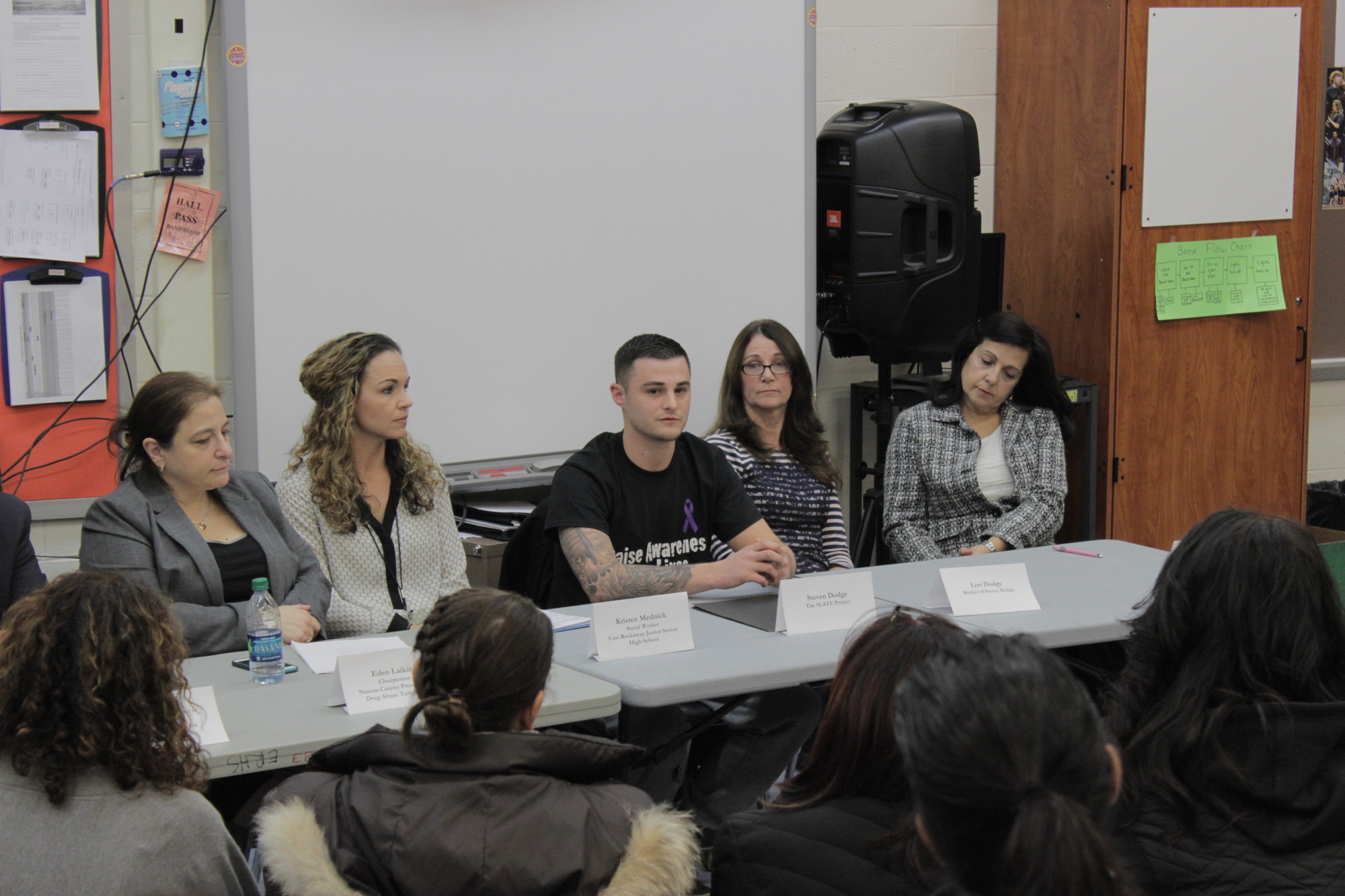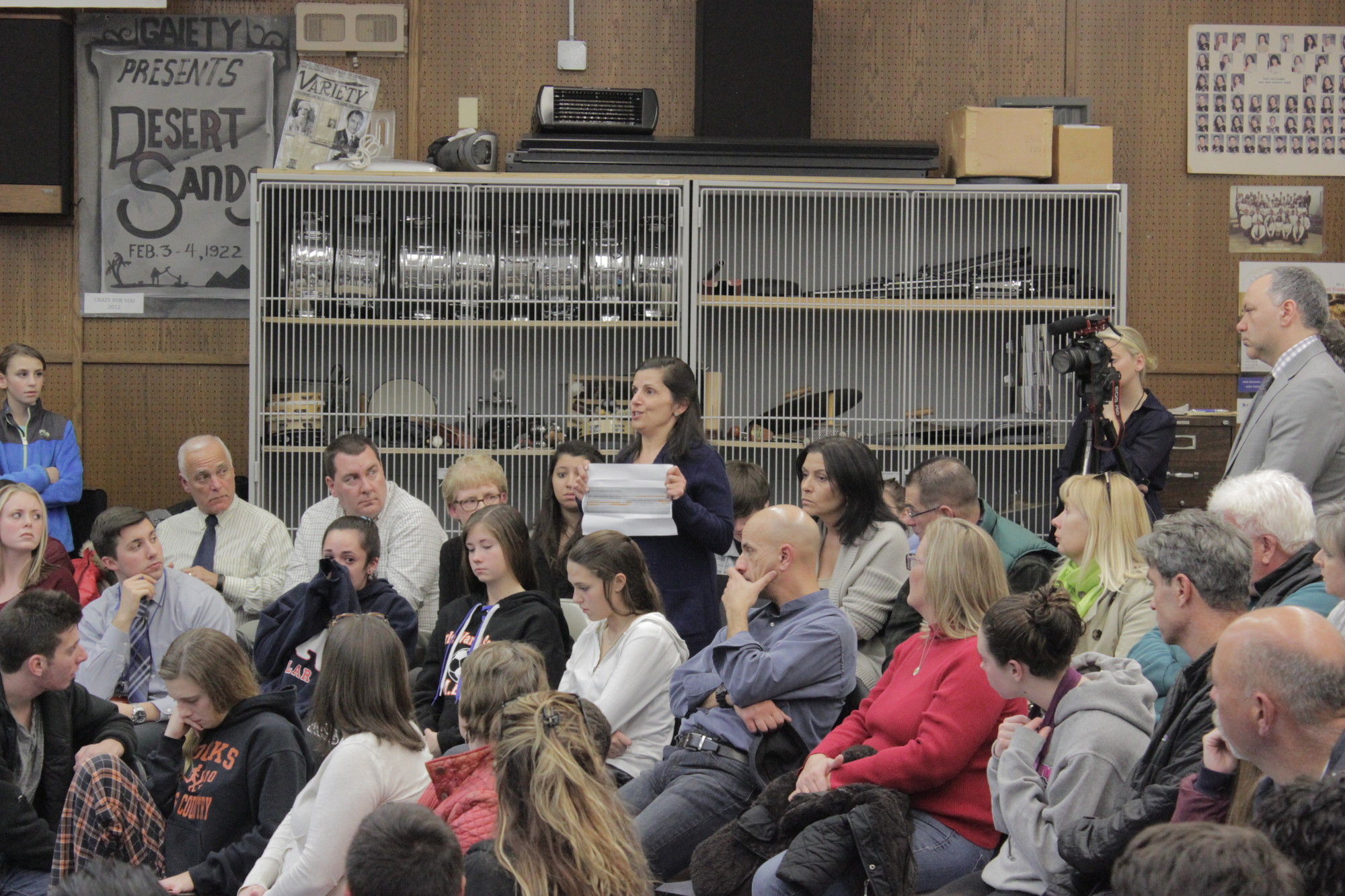Helping addicts: prevention, detox, rehab
“They are the best liars and manipulators in the world,” Lori Dodge said of addicts at a drug-awareness seminar in East Rockaway on Dec. 2. “It doesn’t matter if you’re there right [with] them, or if you’re at work that day.”
Dodge and her son, Steven, 25, were part of a panel comprising Nassau County Police Department officials, social workers and school district staffers who took part in the open forum, held at the East Rockaway Junior-Senior High School.
The panel included John P. Reilly, associate special agent in charge of the New York division of the Drug Enforcement Administration; Detective Pam Stark of the NCPD’s Department of Community Affairs; Eden Laikin, chairwoman of the Nassau County Prescription Drug Abuse Task Force; Kristen Mednick, a social worker at the high school; and Francesca Rizzo, a social worker at the Oceanside Counseling Center.
The panel began by offering some general information about addiction and treatment, but the focus shifted when audience members began coming forward to tell their own stories.
“My son Robert passed away seven months ago from a heroin overdose,” said Grace Chamberlain, of Lindenhurst. “I have another son who’s 28 — he was in rehab when Robert passed away, and then he came out and used.” She added softly, “It didn’t matter.”
Chamberlain, who was accompanied by her husband, Rick, acknowledged the importance of prevention, but said her family’s efforts to get their sons the treatment they need has been hindered by insurance companies. “We were turned away from a rehab facility upstate,” she explained, because her insurance deemed their situation “not a medical necessity.”
“It’s a whole process for somebody to get into a rehab or detox — I think we need more places for people to go,” said Rick Chamberlain, whose comments were met with applause. The panel was quick to offer condolences to the couple.
Frustrations with accessibility to drug rehabilitation programs dominated the discussion. Participants were frequently moved to tears, and shared tissues and expressions of support with one another.









